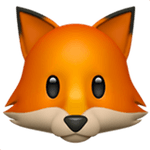Sublime
An inspiration engine for ideas

most people's definition of "trying" is contingent on not taking on any reputational risk, not investing more than two weeks of time, not investing more than 2 months of their salary, and giving up after the second obstacle
the world is free for those who want it
astridwilde1x.comSeeing like a software company
seangoedecke.com
I believe I am being confronted with this impossible task: making a perfect idea into a perfect creation . What I fail to recognise is that the idea only seems perfect precisely because it has no counterpart in reality .
giulia spadoni riva • you love your potential too much
There’s no better marker of culture’s unoriginality than everyone talking about culture’s unoriginality.
Erik Hoel • Our Overfitted Century

I used to struggle w needing to be “creative” or “original” in my work. At some point I had a breakthrough that really helped me: I cannot repeat an idea, no matter how basic or common, without imparting some of my worldview into it.
Emmett Sheartwitter.com